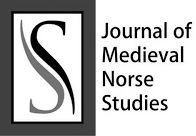Submissions
Submission Preparation Checklist
As part of the submission process, authors are required to check off their submission's compliance with all of the following items, and submissions may be returned to authors that do not adhere to these guidelines.-
1. The contribution is original and unpublished, and is not being evaluated for publication by another journal; otherwise, it must be justified in "Comments to the editor".
-
2. The submission file is in Microsoft Word, OpenOffice or RTF format.
- 3. The text follows the style standards and bibliographic requirements described in Author Guidelines, on the Journal page (Submissions guidelines).
Articles
Política padrão de seção
Dossier: Viking Age Archaeology
The continuous evolution of perspectives, adoption of innovative methodologies, and the unearthing of recently discovered sites have further enriched our understanding of Scandinavia's past and the dispersion of Viking influence throughout the Globe. In this context, we invite researchers to submit articles delving into archaeological themes within the following topics:
- The history of Viking Age Archeology: from the pioneers to the most recent research. Its reception, its criticism, and its convergence with historiographical perspectives.
- Viking activities: war; camps; diaspora; settlements; battle equipment and techniques; identity and material culture.
- Art, runestones, iconography, mythology. The study of beliefs, memory, aesthetics, and culture from a material perspective.
- Daily life, cities, farms, food, clothing, technologies, buildings and monuments. Norse life and societies during the Viking Age, within and beyond Scandinavia.
- Theories, methods, and conceptual perspectives of Archeology applied to the Viking Age.
The dossier will be organized by Professor Johnni Langer (johnnilanger@yahoo.com.br). Reviews on the articles received will be provided by members of the Journal's Scientific Council and archaeologists to be contacted by the editor.
Contributions are accepted in English, Spanish, French, Italian and Portuguese. Submissions must be sent no later than August 30, 2024.
Copyright Notice
The author (s) of the original submitted undertake to comply with the following:
- All authors are publicly responsible for it.
- The authors claim that this original is their own and that they assume full responsibility to third parties, whether moral or patrimonial, by reason of its content, stating that the work does not infringe any intellectual property rights of third parties.
- The author (s) agree to the copyrights of the original to Scandia Journal, to which they grant permission for its reproduction, editing and online publication.
- The author (s) grant their copyright of their original to the Scandia Journal, licensed under the Creative Commons Attribution License, which allows the sharing of this work with the acknowledgment of their authorship.
- The author (s) have permission and are encouraged to cite and distribute their original.
Privacy Statement
The names and addresses informed in this Journal will be used exclusively for the services provided by this publication, and will not be made available for other purposes or to third parties.


